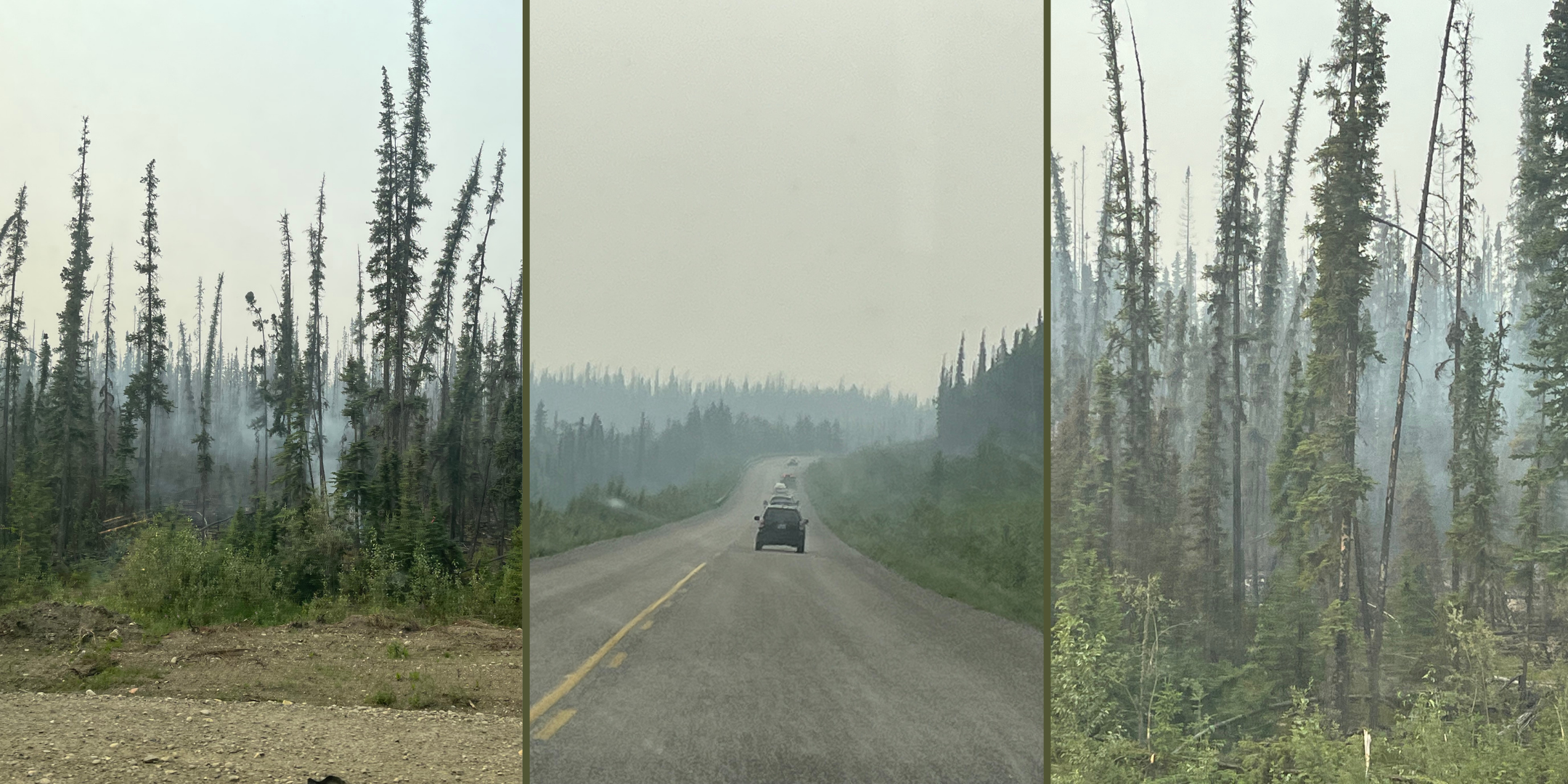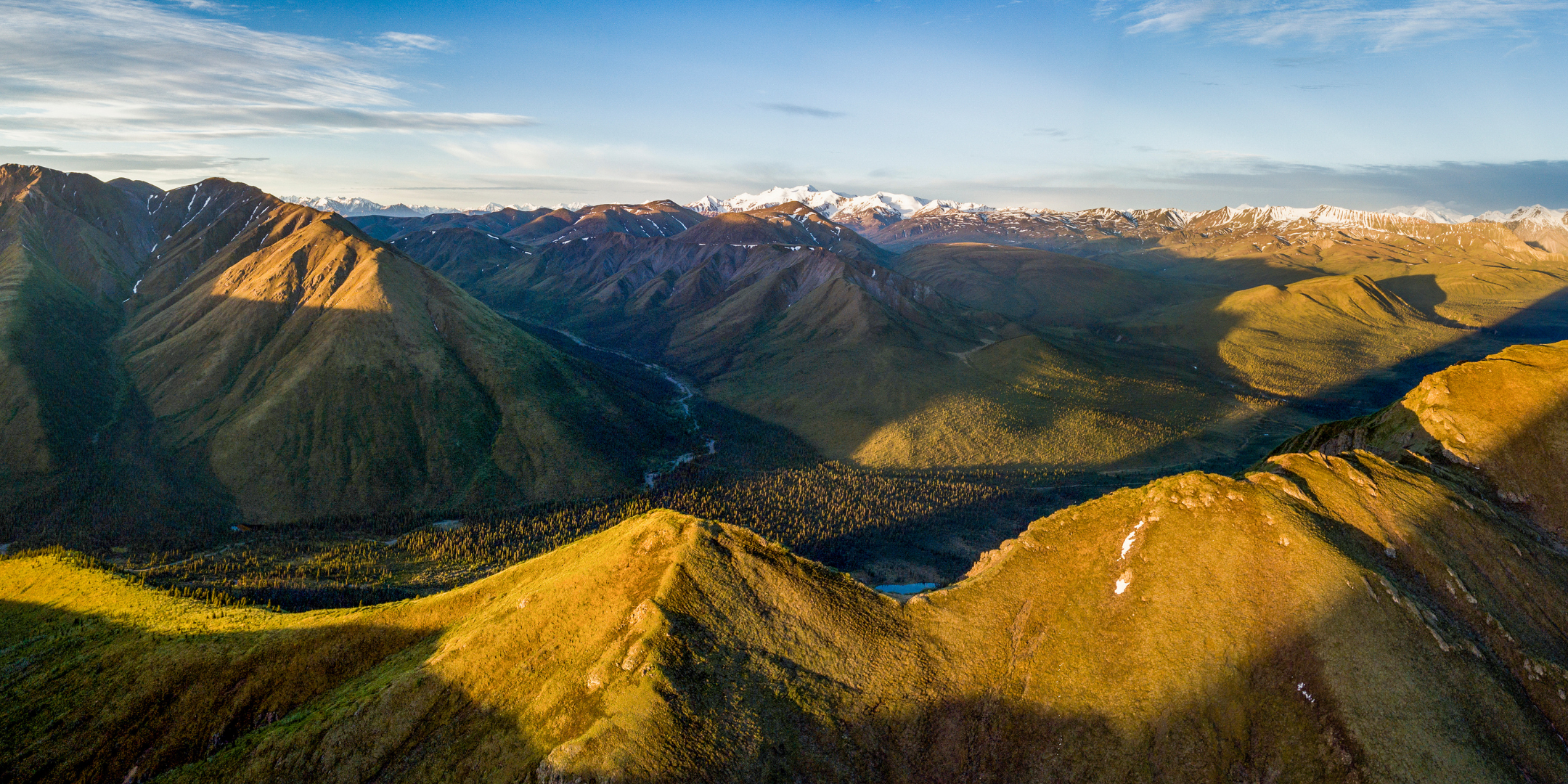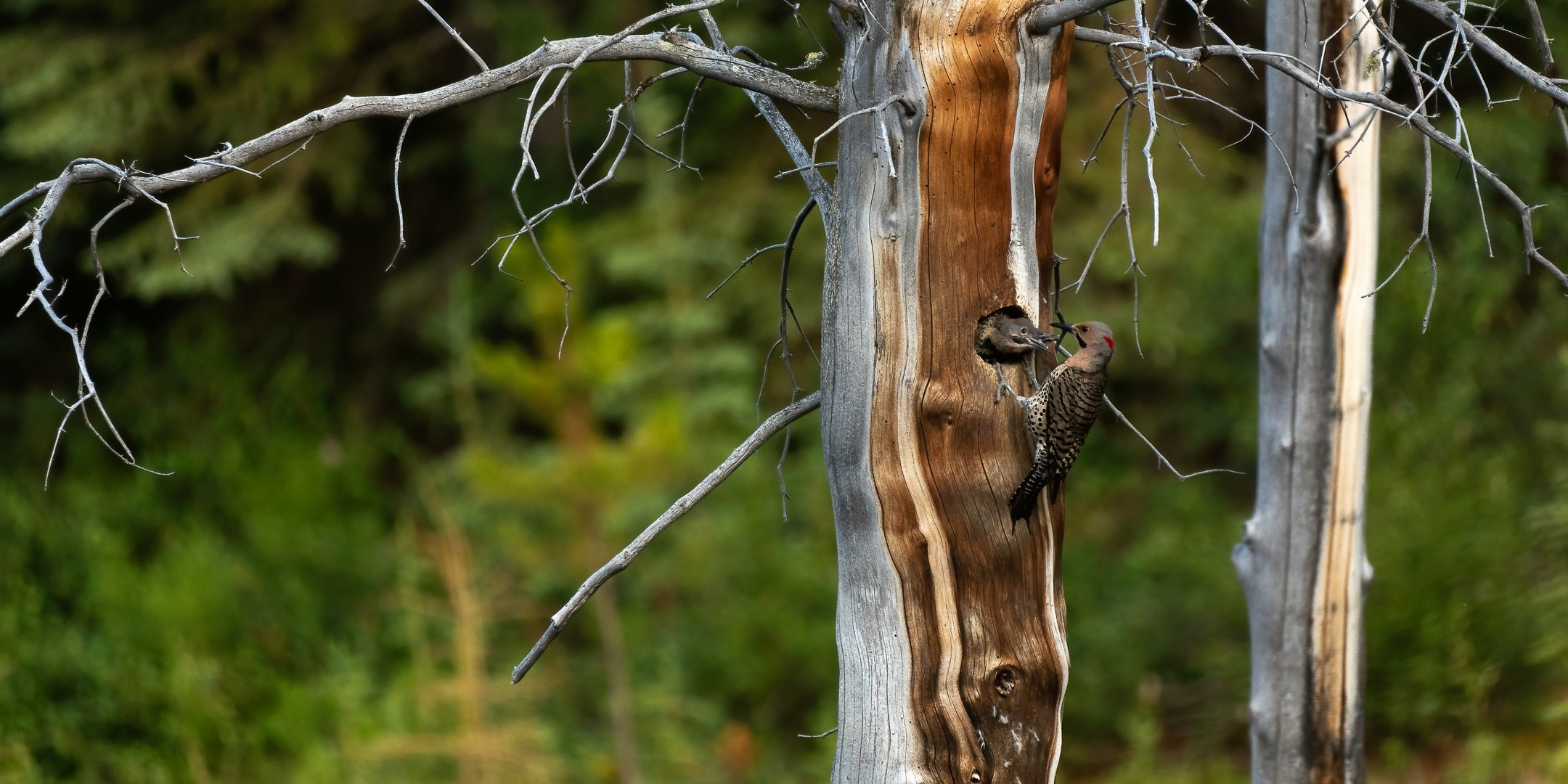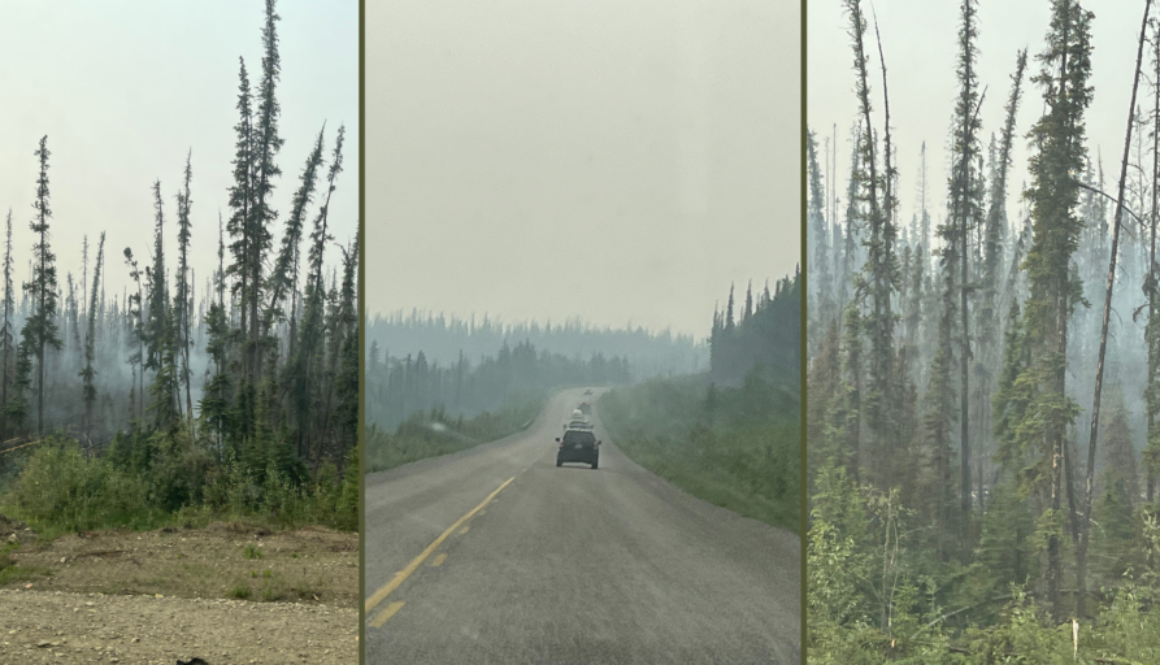Is this the face of climate change in the Yukon?

Written by Paula Gomez Villalba. Title photos by Adil Darvesh.
Every time I go outside, there’s something that makes me ask myself, “Is this the face of climate change in the Yukon?”
Flood warnings. Landslides. Wildfires. Daily lightning and thunder. Road closures. Power outages. Hot weather. Relentless mosquitos.
And it’s all connected. Temperatures last winter were higher than normal with record-breaking snowfall. All of this snow had to go somewhere as summer arrived, leading to rising water levels and loads of standing water for breeding mosquitoes. It’s strange to think that even with this surplus of water, there are over 100 active wildfires in the Yukon, heat warnings, and thunderstorms.
Cue climate change.
Our history is no stranger to changing climates. For millions of years, glacial and interglacial cycles have melted and formed ice sheets across the Yukon. Most recently, the Bering land bridge that connected North America to Siberia flooded, sea levels rose, and glacier melt carved rivers across our new landscapes. The difference is that those changes happened over tens of thousands of years, not over the last two centuries (how long humans have been burning fossil fuels). There was time for many plants and animals to evolve, adapting to the changing conditions or moving to new areas.

Photo by Malkolm Boothroyd
Now with evacuation alerts in place across Mayo, Keno, Teslin, and other communities, we are at the frontlines of the climate crisis. Scientists are often reluctant to say that a specific event is caused by climate change because that can be hard to prove. There are lots of forces interacting with one another. A wildfire, for example, might be caused by lightning or unattended campfires, but it’s also affected by wind, temperature, leaf litter, and moisture in the plants. What’s certain is that climate change causes events like wildfires and floods to become more frequent and more extreme. It also disproportionately affects Northern Canada. According to Environment Yukon,
“The Yukon’s average temperature increased by 2.3°C between 1948 and 2016. Winter temperatures increased by 4.3°C over the same time period. This is close to three times the rate at which global temperatures are rising.”
When I first started learning about climate change, I was overwhelmed by the amount of information, statistics, and models. I found myself reading article after article, trying to understand the relationships between acid rain, sea level rise, glacial melt, changes in biodiversity, etc. When I finally emerged from that rabbit hole, I still didn’t fully understand. It was frustrating and often times paralyzing. A lot of it was doom and gloom. How could a single person take action in a crisis that reaches all corners of the planet? Nowadays there’s a term for these thoughts and emotions – ecoanxiety.
Then I realized that as individuals we don’t need to have all the answers. Change comes from collective action.

Photo by Paula Gomez Villalba
All around us there are people passionate about connecting with the land and protecting our productive forests and rich ecosystems. Wildflowers are blooming, buzzing with bumblebees spreading their pollen. Caribou are welcoming the next generation of young, and flickers are starting to peak out from their nests, eager to explore their forest homes. By starting from a place filled with gratitude and a sense of community, we can find our own special ways to fight climate change.
Learn how you can find joy in climate action in this talk by biologist and writer Dr. Ayana Elizabeth Johnson:
CPAWS Yukon works to connect government, businesses, first nations, and citizens so that we can make sure the future of our wild spaces reflects our cultural, personal, and ecological values. Sometimes that means working behind-the-scenes, but a lot of the time we also share opportunities where people like you and I can make our voices heard.


